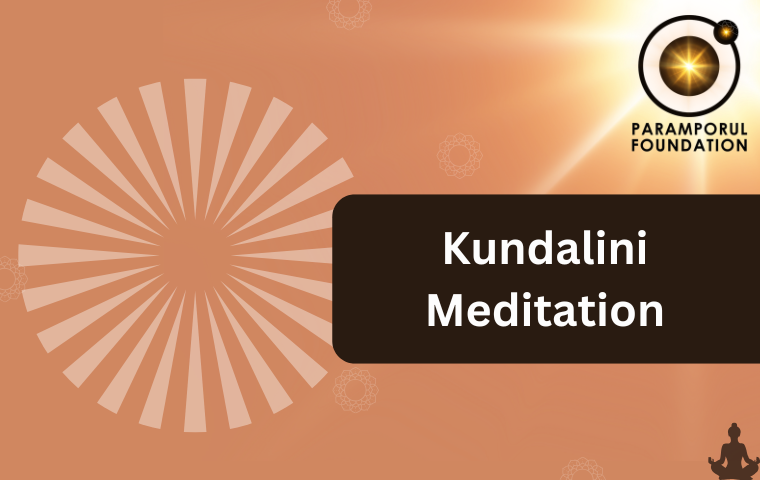Kundalini meditation is a practice designed to awaken the powerful energy that lies dormant at the base of your spine. This energy, known as “Kundalini,” is often visualized as a coiled snake, ready to rise up through the body to bring spiritual awakening and higher consciousness. It’s a transformative journey for those seeking to connect deeply with themselves and experience mental, emotional, and physical healing.
What is Kundalini Meditation?

Kundalini meditation is part of a larger spiritual discipline known as Kundalini yoga, which focuses on awakening the energy at the root chakra and guiding it through the body’s seven chakras, ultimately reaching the crown chakra. As this energy moves through the body, it is believed to clear blockages and elevate your consciousness, leading to greater awareness and spiritual growth.
The practice involves deep breathing exercises, chanting mantras, and specific body movements that help release this energy and connect you to your inner self. By focusing on these techniques, you open yourself up to more balanced emotions, clarity of thought, and a deeper connection with your true purpose.
Origins of Kundalini Meditation

The roots of Kundalini meditation trace back thousands of years. Ancient Hindu scriptures, like the Upanishads, first mentioned Kundalini energy, explaining how it resides within everyone. Early teachings centered on the belief that a divine force resides at the base of each individual’s spine, waiting to be awakened. The exact origins of Kundalini meditation remain unclear. However, many believe that practitioners have passed these practices down through generations, evolving them into a more structured system over time.
The practice remained largely private for centuries, with only dedicated spiritual students learning its deeper secrets. It wasn’t until the late 1960s that Yogi Bhajan brought Kundalini yoga and meditation to the West. His teachings helped popularize the practice and made it accessible to people seeking mental clarity and spiritual enlightenment.
The Purpose of Kundalini Meditation
The main goal of Kundalini meditation is to raise your awareness and connect you with a higher state of consciousness. In today’s fast-paced world, most of us operate on autopilot, unaware of our thoughts and reactions. Kundalini meditation offers a path to break this cycle and live with intention.
By practicing this meditation, you learn to control your energy, calm your mind, and manage stress. It’s a way of releasing mental clutter and fostering a deeper connection between the body and mind. Regular practice can help you overcome negative habits, increase mindfulness, and bring about a sense of peace.
Techniques in Kundalini Meditation
Kundalini meditation involves several techniques that combine to awaken and move the energy through the body:
Breathing Exercises: Conscious breathing is central to the practice. Slow, controlled breaths help regulate the flow of energy through the body. As you breathe deeply, you become more aware of the present moment and can better control your thoughts.

Mantras: Repeating mantras or phrases is a key aspect of Kundalini meditation. These sacred sounds direct the energy and help you stay focused. The mantra “sat nam” (meaning “truth is my identity”) is commonly used by beginners. It aligns your breath with your intention, making it easier to maintain focus.
Mudras: Mudras, or hand gestures, direct the flow of energy within the body. Certain mudras help to promote calm, balance, and clarity during meditation.

Postures: Sitting with a straight spine is important in Kundalini meditation, as it allows the energy to flow freely through your chakras. Practitioners may use different poses to enhance the experience and create alignment within the body.
Benefits of Practicing Kundalini Meditation
Many people who practice Kundalini meditation report a variety of benefits, both physical and mental. Some of the key benefits include:
- Stress Reduction: Kundalini meditation helps reduce stress by encouraging relaxation and helping practitioners focus on the present moment.
- Increased Mindfulness: It enhances your awareness of thoughts, emotions, and surroundings, promoting a deeper connection with the world.
- Enhanced Emotional Balance: The practice helps release pent-up emotions and brings balance to your emotional state.
- Clarity of Mind: Regular meditation clears mental fog and enhances cognitive functioning, promoting a clearer, sharper mind.
- Improved Sleep: Kundalini meditation reduces anxiety and stress, which helps improve sleep patterns and enhances the quality of rest.
- Spiritual Growth: As energy moves through the body, many people report experiencing spiritual growth, a sense of inner peace, and a heightened state of awareness.
A Simple Guide to Starting Kundalini Meditation
Kundalini meditation doesn’t require any prior experience, and you can begin with just a few minutes each day. Here’s how to get started:
1. Choose a Quiet Space: Find a calm, distraction-free space to meditate. It should be a place where you feel at ease, such as a cozy room or a peaceful corner of your home.
2. Wear Comfortable Clothing: Choose loose, comfortable clothing to allow freedom of movement. Many practitioners prefer light-colored clothes that help enhance the feeling of lightness and openness.
3. Find a Comfortable Position: Sit comfortably with a straight spine. You can either sit in a chair or cross-legged on the floor as long as you keep your spine upright. Keep your eyes slightly closed to maintain focus.
4. Set a Timer: Start with just 5 to 10 minutes of meditation. Gradually increase the time as you become more comfortable with the practice.
5. Chant a Mantra: Choose a mantra that resonates with you. The mantra “sat nam” is a great place to start. Chant it slowly as you breathe, allowing the sound to guide your focus.
6. Focus on Your Breath: Slowly inhale and exhale, making sure each breath is deep and controlled. Focus on how the breath moves through your body and helps to relax and center you.
7. End with Gratitude: After your meditation session, take a moment to thank yourself for the time spent nurturing your body and mind. Gradually bring your awareness back to the present moment.
Final Thoughts
Kundalini meditation is a transformative practice that enables you to connect with your inner self and develop a sense of peace and purpose. By using techniques such as deep breathing, chanting, and focused intention, you can awaken the energy within and experience profound mental and spiritual benefits. Regular practice brings awareness, balance, and clarity, leading to a deeper connection with yourself and the world around you. Whether you are new to meditation or a seasoned practitioner, Kundalini meditation can be a transformative tool for growth and well-being.

